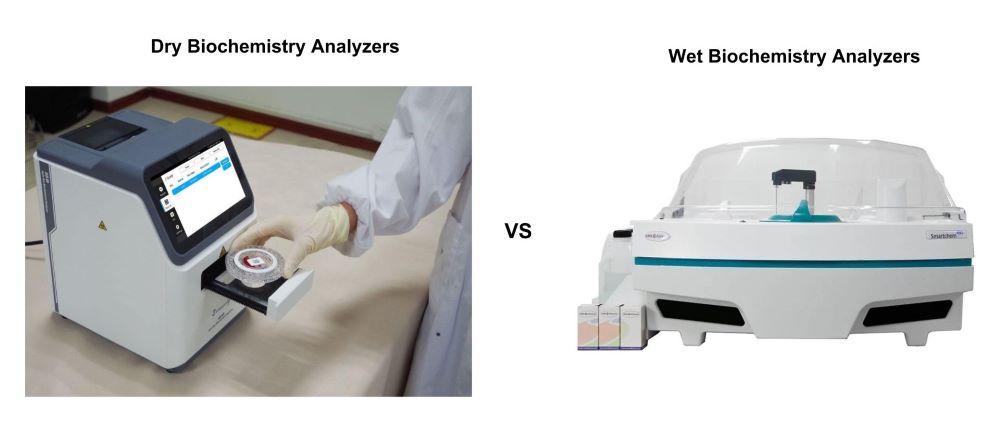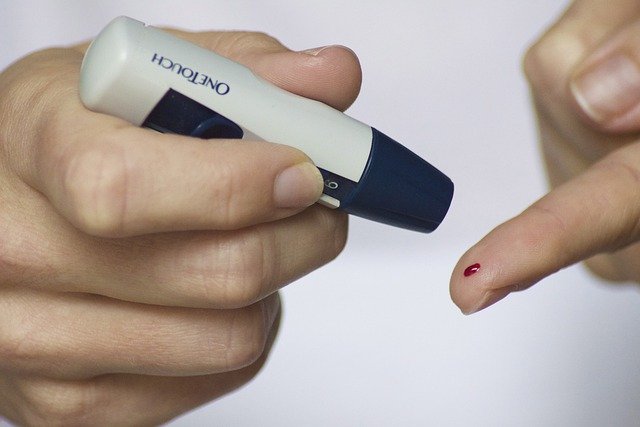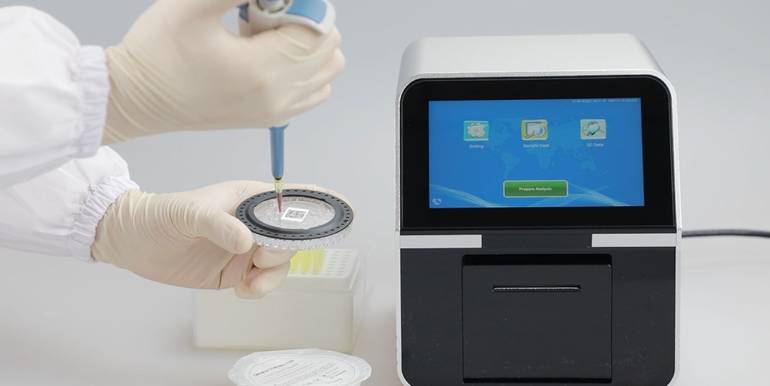release time:2023-11-01 11:25:37
When it comes to medical diagnostics and laboratory testing, accuracy, speed, and efficiency are of utmost importance. Traditionally, wet chemistry methods have been the gold standard for conducting a wide range of clinical tests. However, dry biochemistry analyzers are now emerging as a game-changer in the field of diagnostics, offering a multitude of benefits over their wet counterparts. In this article, we'll explore the advantages of dry biochemistry analyzers and why they are becoming increasingly popular in healthcare settings.

Before we delve into the benefits, let's clarify what dry biochemistry analyzers are. Unlike wet chemistry methods, which involve the use of liquid reagents, dry biochemistry analyzers use solid-state or dry reagents, often in the form of test strips, cartridges, or discs. These reagents are pre-packaged and require minimal or no sample preparation, making the testing process more streamlined and efficient.
One of the most significant advantages of dry biochemistry analyzers is their speed. Traditional wet chemistry tests can be time-consuming, often requiring multiple steps and extended incubation periods. In contrast, dry biochemistry analyzers provide rapid results, sometimes within minutes. This quick turnaround time is particularly valuable in emergency situations and routine clinical testing, where timely results can make a significant difference in patient care.
In wet chemistry tests, the accuracy of results can be influenced by human factors, such as variations in pipetting and mixing techniques. Dry biochemistry analyzers largely eliminate these sources of error by automating the testing process. The precise and standardized nature of dry reagents, along with automated procedures, reduces the risk of human error and ensures consistent, reliable results.
Dry biochemistry analyzers require smaller sample volumes than their wet counterparts. This reduction in sample size is especially advantageous when dealing with pediatric patients, elderly individuals, or when the available sample is limited. It not only minimizes patient discomfort but also conserves valuable samples for additional testing if needed.
While initial setup costs for dry biochemistry analyzers may be comparable to wet chemistry equipment, the cost-effectiveness becomes evident over time. Dry reagents typically have a longer shelf life, reducing waste and the need for constant reordering. Additionally, the streamlined process and reduced human intervention mean fewer labor hours are required for testing, contributing to cost savings in the long run.
Dry biochemistry analyzers are versatile and can perform a wide range of tests, from basic chemistry panels to specialized assays. Their ability to automate many complex testing procedures makes them an ideal choice for busy clinical laboratories. Moreover, these analyzers can be programmed to run multiple tests simultaneously, further increasing their efficiency and throughput.
Dry biochemistry analyzers are environmentally friendly. With reduced waste generation and fewer chemicals used, they have a smaller ecological footprint compared to wet chemistry methods. This aligns with the growing trend of healthcare institutions adopting more sustainable practices.
The operation of dry biochemistry analyzers is user-friendly, requiring minimal technical expertise. This ease of use enables a broader range of healthcare professionals to perform tests, reducing the burden on specialized laboratory technicians.
|
Benefit |
Description |
|
Speed and Efficiency |
Rapid results, often within minutes, ideal for emergency and routine testing. |
|
Reduced Human Error |
Automated processes minimize the risk of human-related inaccuracies. |
|
Smaller Sample Sizes |
Requires less sample volume, reducing patient discomfort and sample wastage. |
|
Cost-Effectiveness |
Long shelf life, reduced labor, and lower environmental impact lead to savings. |
|
Versatility and Automation |
Can perform a wide range of tests and automate complex procedures. |
|
Minimal Environmental Impact |
Reduced waste and chemical use make them more eco-friendly. |
|
User-Friendly Operation |
Easy to use, making them accessible to a broader range of healthcare professionals. |
Dry biochemistry analyzers have ushered in a new era of efficiency and accuracy in medical diagnostics. Their speed, reduced human error, smaller sample sizes, cost-effectiveness, versatility, and environmental benefits make them a compelling choice for healthcare institutions. As technology continues to advance, we can expect dry biochemistry analyzers to become even more sophisticated, further enhancing their value in the field of diagnostics. The transition from wet to dry methods is not just a trend but a transformative step toward better patient care and streamlined laboratory operations.
Recommended further reading:
[1]. Dry Chemistry Analyzer vs. Wet Chemistry Analyzer: A Comprehensive Comparison
[2]. Dry Chemistry Analyzer Principle, Application, Advantages and Disadvantages
[3]. Dry vs. Wet: Unraveling the Battle of Chemistry Analyzers
[4]. Dry Chemistry Analyzer Meaning | Principle | Use | Biochemistry Machine
[5]. Dry chemistry advantages and disadvantages | Medical equipment supplier
[6]. Comparison of dry chemistry and wet chemistry testing principles

2022-03-28
The outbreak of the Coronavirus has also led to the emergence of Coronavirus testing products. There are currently three main methods of testing for Coronavirus in the world, which are nucleic acid testing, antibody testing, and antigen testing.

2021-11-09
Blood glucose meter to detect blood sugar is a simple, convenient and fast detection method, which is becoming more and more popular. However, some people find that the blood glucose test is different from that of automatic biochemistry for the same condition and the same patient when they use home blood glucose meter. So, what is the difference between home blood glucose meter and fully automatic biochemical meter when testing blood glucose?

2021-09-02
POCT (point-of-care testing) can break through the limitations of testing professionals, space, and testing time, eliminating the need for sample processing, sample delivery, equipment testing, data processing, and data transmission. It is a method to obtain test results instantly and quickly.